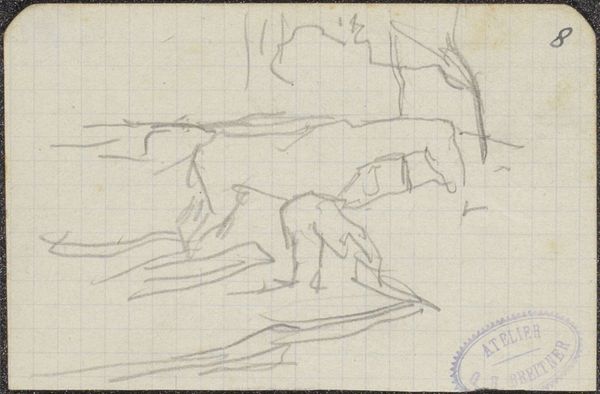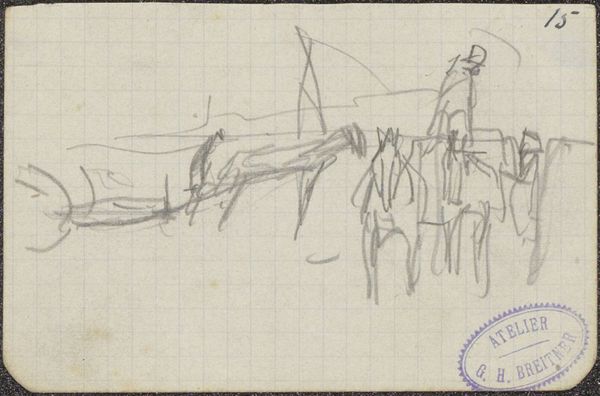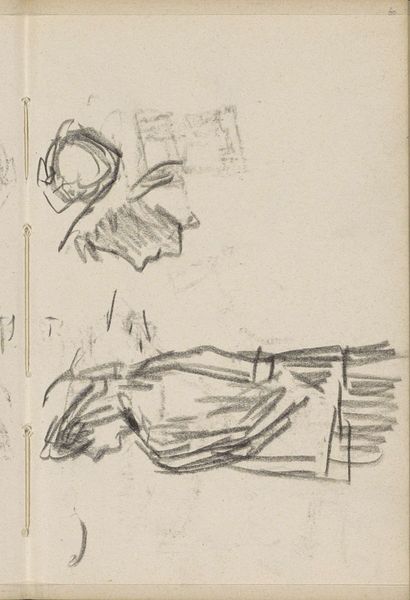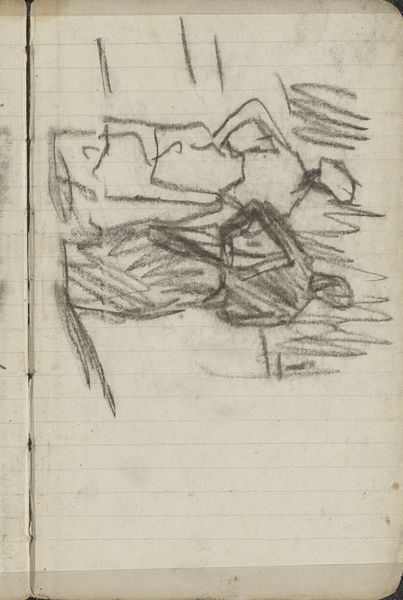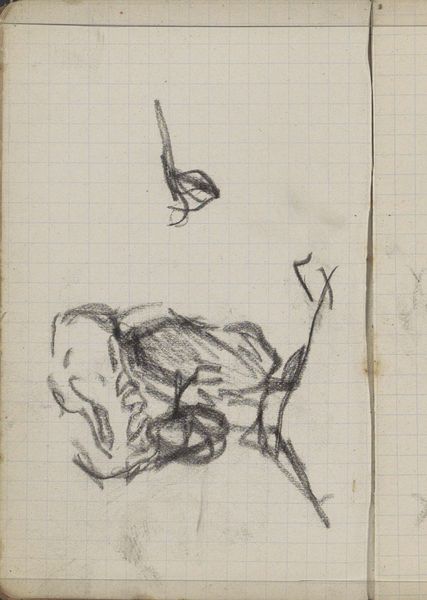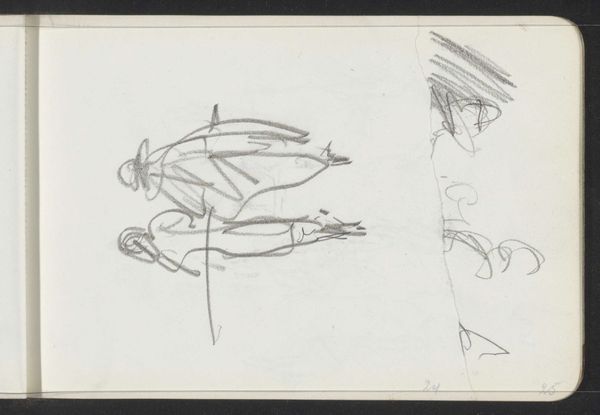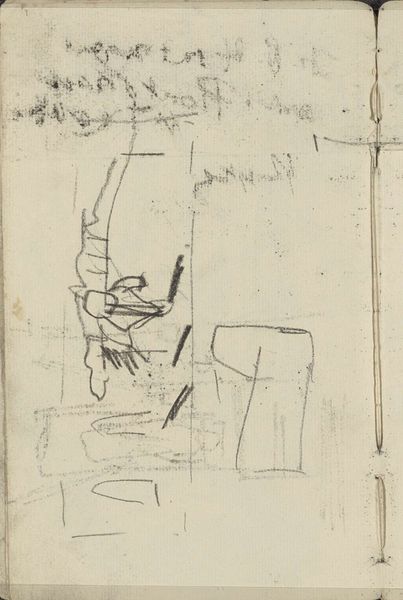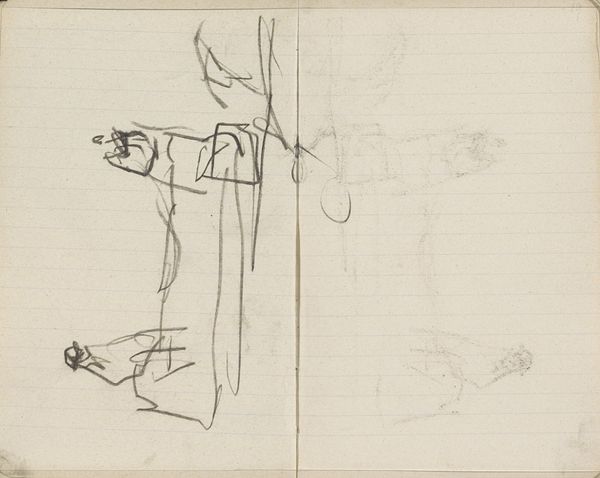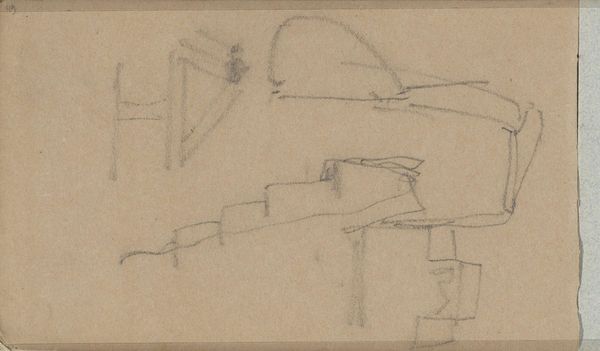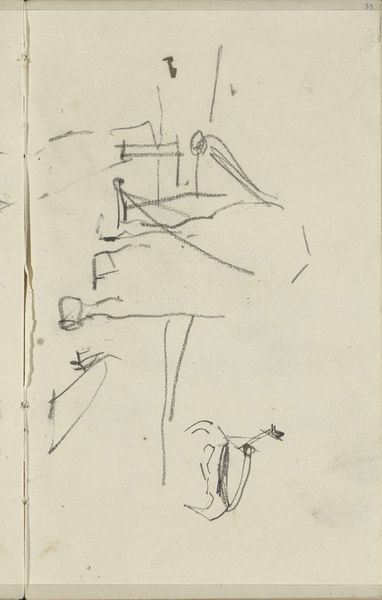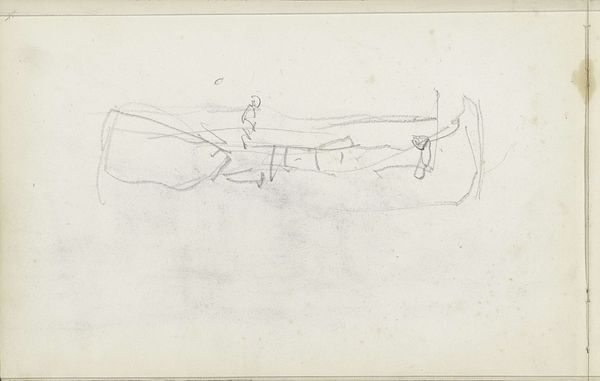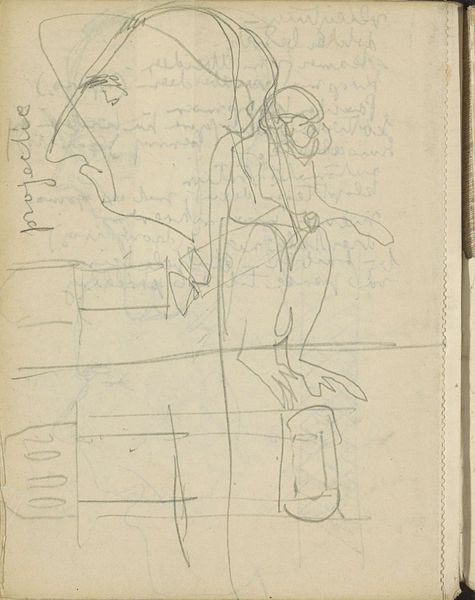
drawing, pencil
#
drawing
#
impressionism
#
landscape
#
pencil
Dimensions: height 64 mm, width 98 mm
Copyright: Rijks Museum: Open Domain
Curator: This is George Hendrik Breitner’s, "View of the Damrak in Amsterdam with Ships," a pencil drawing from 1890. Editor: There’s a remarkable rawness to this sketch. You immediately get a sense of the immediacy of the scene, like a fleeting moment captured. The loose lines suggest movement, and the composition is daringly simple. Curator: Breitner's impressionistic style focused on capturing the gritty realities of urban life. He often depicted the working class and the bustling city streets. What stories do you think this piece tries to capture from the Damrak in Amsterdam? What does it suggest to you about labor and leisure around the port in the late nineteenth century? Editor: Interesting question! First off, I’m struck by how he uses line to define space and form; even with such spare application of pencil, there’s a palpable sense of depth and scale, an impressive structural integrity that transcends the work’s humble materiality. I mean, just observe the rendering of the ships! The geometric harmony of the boats seems less interested in the depiction of labour, and more focused on spatial coherence. Curator: It's true that he wasn't explicitly political in his art, he did give us glimpses into everyday life during a period of intense social change. The quays of the Damrak were spaces of commerce, migration and exchange, central not just to the city’s economic growth, but its engagement with broader global networks. Considering these sketches were created in the late 19th Century, as Amsterdam continued to expand into a global center, what narratives might emerge from these traces? Editor: Well, from my point of view, there's an attempt at a purely optical experience here. Forget commerce, Amsterdam, and all historical contextual baggage. It's really just lines creating shapes and depth that produce what Clement Greenberg called "optical space," something wholly pictorial and unconcerned with anything beyond itself. Curator: And yet, denying these artworks their social contexts risks stripping away the nuanced commentary they offer on their historical moment, especially regarding the city’s engagement with larger cultural dynamics of class and gender during the rise of Modernity. Editor: Maybe, but there's also an elegant formalism in the stark representation of urbanity that supersedes historical interpretation. Curator: It is definitely thought-provoking, as the lines blur, much like the confluence of diverse global and local cultures. Editor: Indeed, viewing this drawing makes me think deeply about how even minimal representation contains layers of intention and interpretation.
Comments
No comments
Be the first to comment and join the conversation on the ultimate creative platform.
